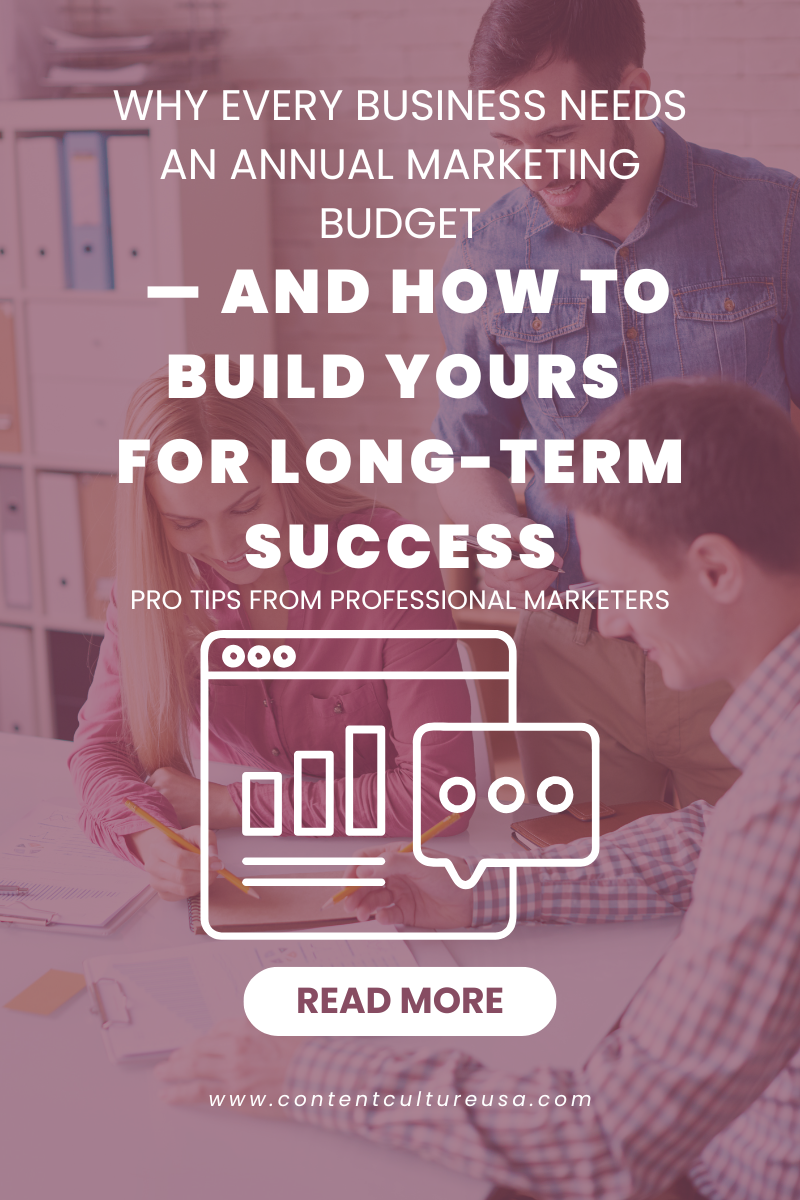CHRISTINA CAGLE | FOUNDER OF CONTENT CULTURE | APRIL 3RD, 2025
Value to Your Clients

The Ultimate Guide to Website Design & Creation for Effective Marketing
In today’s digital landscape, your website is more than just an online presence—it’s a powerful marketing tool that can drive conversions, establish brand authority, and enhance customer experience. A well-designed website is a cornerstone of digital marketing success, combining aesthetics, functionality, and strategic messaging to engage visitors and turn them into loyal customers.
1. The Role of Website Design in Marketing
Website design is a critical component of your marketing strategy. A poorly designed website can repel visitors, while a well-structured, visually appealing, and user-friendly site enhances credibility and encourages engagement.
- First Impressions Matter: Visitors form an opinion about your brand within seconds. A Clean, modern design with straightforward navigation features ensures that they will stay.
- Brand Consistency: Your website should reflect your brand’s identity, including colors, fonts, and tone of voice.
- User Experience (UX): Seamless navigation, fast loading speeds, and mobile responsiveness keep users engaged.
- Trust & Credibility: A professional and secure website increases customer trust and improves conversion rates.
2. Key Elements of a Marketing-Optimized Website
To maximize your website’s marketing potential, consider these essential elements:
- SEO-Optimized Content: Implement relevant keywords, meta descriptions, and structured data to improve search engine ranking.
- Compelling Call-to-Actions (CTAs): Guide visitors toward desired actions such as signing up for newsletters, making a purchase, or booking a consultation.
- Engaging Visuals: High-quality images, videos, and graphics enhance the user experience and reinforce your brand message.
- Lead Capture Mechanisms: Forms, chatbots, and downloadable content help collect visitor information for future marketing efforts.
- Clear Value Proposition: Clearly communicate what sets your business apart and why customers should choose you.
3. Website Development Best Practices
A strong marketing website is built with both users and search engines in mind. Follow these best practices:
- Mobile-First Design: With the majority of users browsing on mobile devices, ensure a responsive layout.
- Fast Loading Speed: Optimize images, use caching, and invest in reliable hosting to minimize page load time.
- Security Measures: Implement SSL certificates and protect user data to build trust and comply with regulations.
- Analytics & Tracking: Integrate tools like Google Analytics and heatmaps to measure performance and optimize strategies.
- User-Friendly Navigation: A logical site structure helps visitors find information quickly and improves search engine rankings.
4. The Connection Between Website and Digital Marketing
Your website should seamlessly integrate with your overall marketing strategy:
- Content Marketing: A regularly updated blog with valuable content improves SEO and keeps audiences engaged.
- Email Marketing: Collect email subscribers and use automated email sequences to nurture leads.
- Social Media Integration: Enable easy sharing and engagement with social media buttons and embedded feeds.
- PPC & Retargeting: Landing pages optimized for paid campaigns increase conversions and ROI.
- Conversion Rate Optimization (CRO): Continuously test and refine website elements to boost performance and maximize results.
5. Measuring Success and Continuous Improvement
Building a marketing-driven website is just the beginning. To ensure ongoing success:
- Monitor Key Metrics: Track traffic, bounce rates, conversion rates, and other vital analytics.
- A/B Testing: Experiment with different layouts, headlines, and CTAs to see what resonates best with your audience.
- Gather User Feedback: Use surveys and heatmaps to understand user behavior and optimize the site experience.
- Stay Updated with Trends: Digital marketing and web design trends evolve, so continuous updates and improvements keep your site competitive.
6. Final Thoughts: Investing in a Marketing-Driven Website
A website is not just a static digital brochure; it’s a dynamic marketing asset that, when designed strategically, can generate leads, increase sales, and build brand loyalty. Prioritize usability, SEO, and compelling content to create a website that works for you 24/7.
By investing in a well-optimized, high-performing website, you ensure that your business stands out in a crowded digital landscape, attracts the right audience, and drives sustainable growth.
Are you ready to transform your website into a high-performing marketing tool? Contact us today to discuss your web design and development strategy!
Zyrafete “Z” Fazlija | MARKETING STRATEGIST | CONTENT CULTURE








